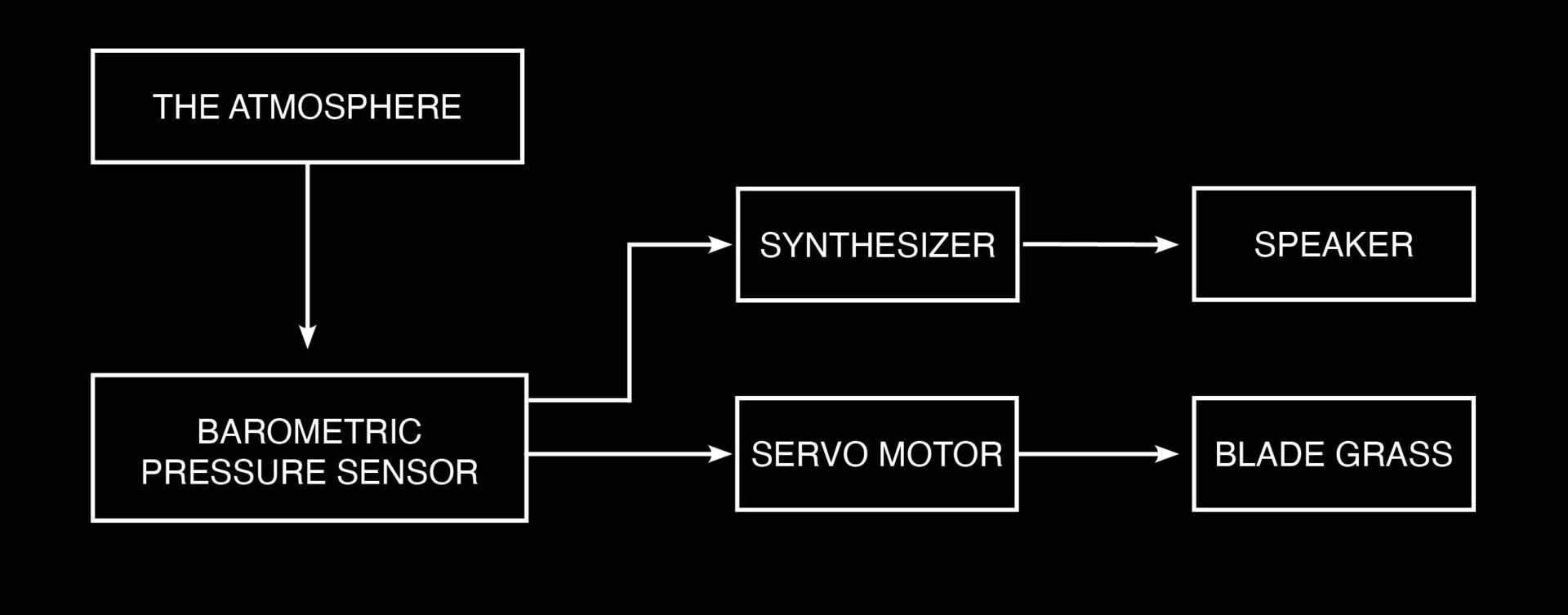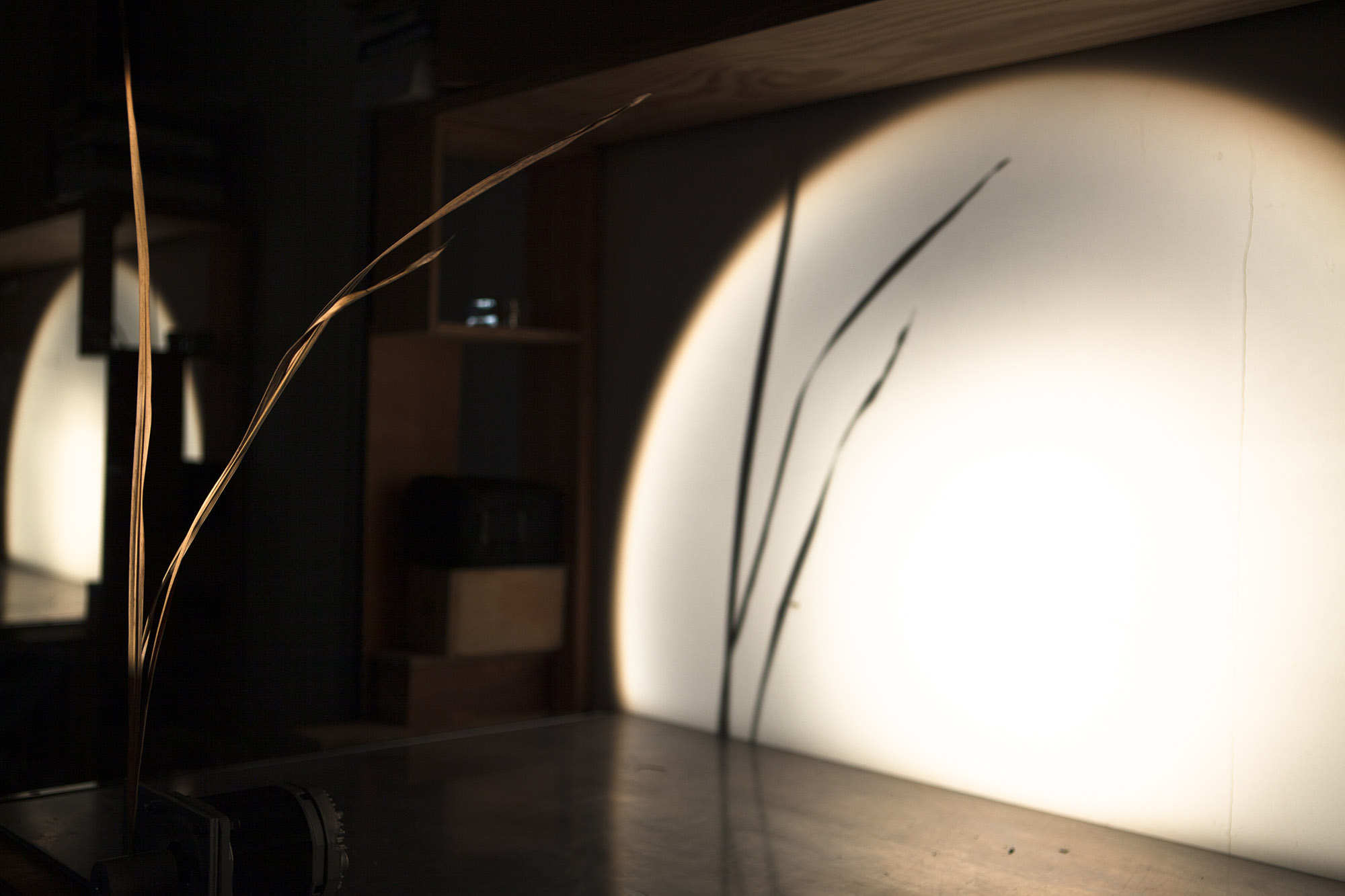
A barometric pressure sensor weighs the atmosphere. A micro-controller and a digital to analogue converter (DAC) produce a variable voltage that corresponds to pressure changes. This control voltage (CV) is connected to a synthesizer and a servo motor. In the synthesizer barometric pressure, voltage, and pitch, rise and fall together.
Several blades of grass have been attached to the servo motor. The motor turns clockwise when pressure rises and counter-clockwise when the pressure falls. The grass, extending outwards from the motor shaft, becomes a gauge of the pressure gradients that move through the space where the work is installed.
Air moves from high to low pressure regions. Steep pressure gradients produce strong winds. Gentle pressure transitions lead to relatively still conditions. The grass in this work was moved by pressure gradients and the wind throughout its time growing, greening, and drying out. Here, attached to a servo motor, it is animated by the air via other means.
The grass is part of a feedback loop that includes the atmosphere, synthesizers, sensors, micro-controllers, code, consciousness, your attention, your breath, your movement, and the air you bring into the space.
The encounter with this work in space is also an invitation to consciously sense air movements with your skin, attending to how that sensing relates to what you are seeing and hearing.
